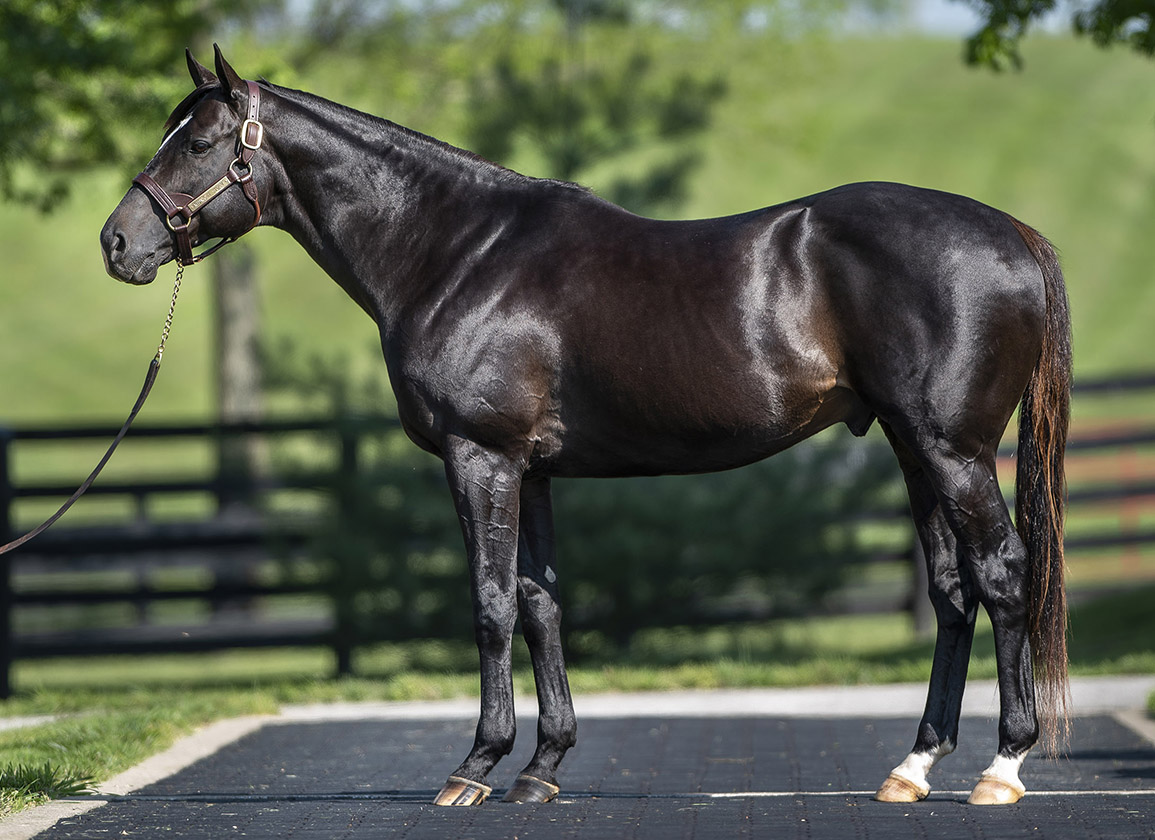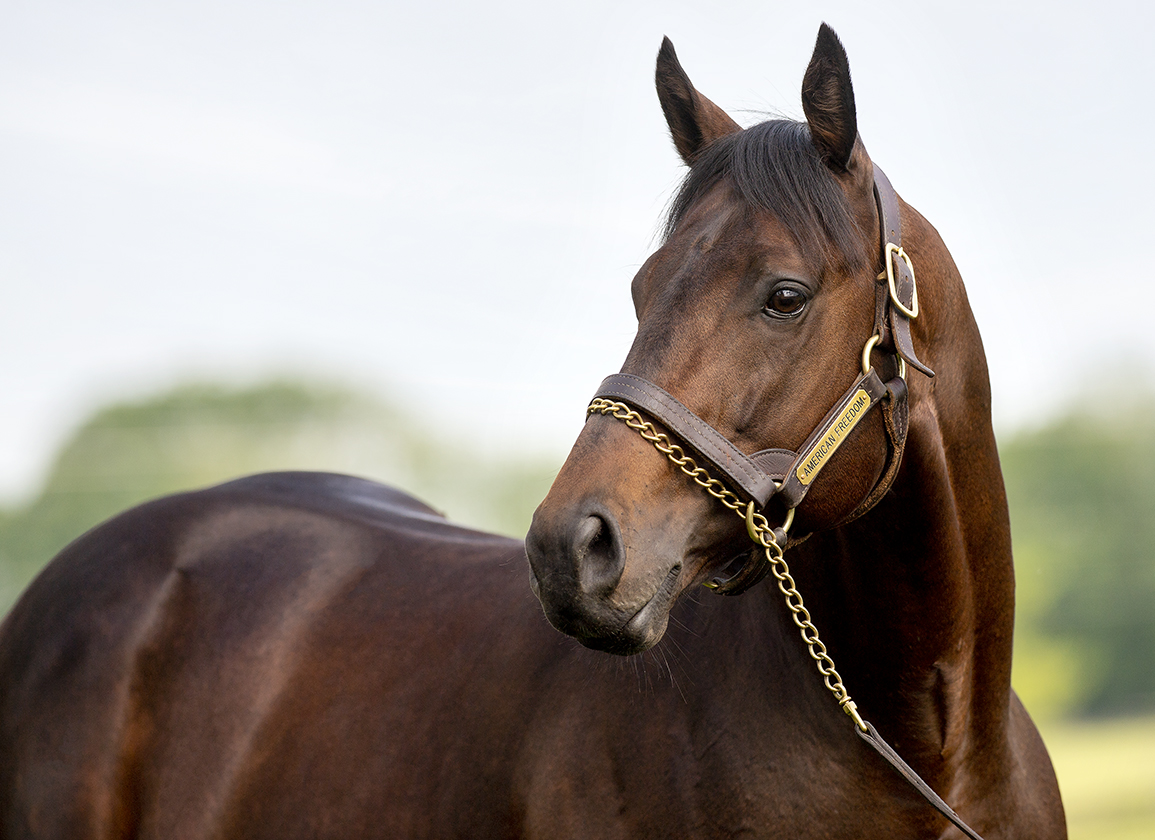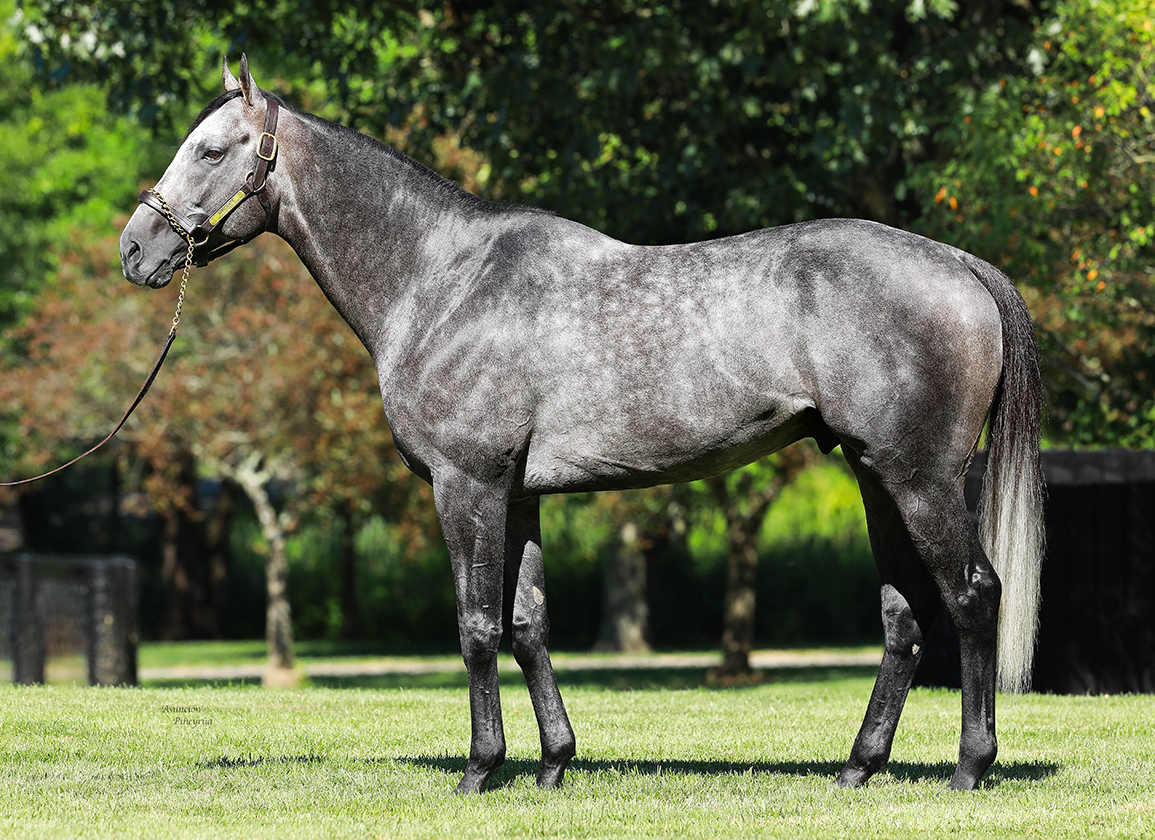Following the completion of the last major 2-year-old sale of the season in each of the past three years, we looked at the potential success of the freshmen sires by creating a handicapping event, noting that the freshmen sires of each year were very competitive bunches, i.e., many of them were capable of rising to the top five or so of their contemporaries after a few crops had raced.
With the aberration in sales dates last year caused by the COVID-19 situation behind us, this season's major sales proceeded as traditionally scheduled, from March through June. Now that the graduates of those sales are starting to race some observers might infer that we will prejudice our picks toward some stallions that have already had a few impressive winners.
To answer that: 1) Fewer than two dozen graduates of the sales sired by freshmen have started thus far; 2): Our task is to lay odds on how the offspring of these sires are likely to compete over the long term, not to identify the Leading Freshman Sire–although both outcomes could be the case in some years.
We concentrated on freshmen of 2021 that had at least 10 of their offspring breeze at the major 2-year-old sales. While we look at pedigrees in context of commercial appeal, we utilize only video and biomechanical data to assist us in our prognostications. The video data details how their offspring compared as individuals to all the other 2-year-olds which breezed regardless of their sires. The components of this data are included in DataTrack's BreezeFigs service which is partially based on breeze time, stride length, and efficiency of angulation. Since 2006, this product has been utilized at sales by buyers and sellers, as well as being offered every day as a handicapping tool at Daily Racing Form's website.
service which is partially based on breeze time, stride length, and efficiency of angulation. Since 2006, this product has been utilized at sales by buyers and sellers, as well as being offered every day as a handicapping tool at Daily Racing Form's website.
We also took into consideration the results of stallion projection profiles which were compiled in 2018 when these horses went to stud. These profiles are based on biomechanical measurements and the probabilities of these stallions siring race-efficient foals from books of biomechanically balanced mares.
We also took into consideration the biomechanical profiles of their offspring taken at the 2021 2-year-old and the 2020 yearling sales.
As mentioned, we limited our interest to stallions for which we have biomechanical data which also had at least 10 offspring that breezed at the major sales–that came down to 17 that began their careers in Kentucky (one, Arrogate, has since died), plus one in New York. In addition, we separated each sire's offspring by sex and in the process discovered that while a few had solid data for both colts and fillies, several others were stronger for one sex. However, several, including some with huge crops represented, returned disappointing results for both sexes.
Fifteen of the Kentucky stallions were separated into three groups according to stud fees that were in effect when they retired to stud–ironically, there are five in each of those groups. Theoretically, they are competing against each other in “races” according to a hypothetical condition book. In addition, Arrogate was set apart because he left only one crop behind, and the other, Mohaymen, entered stud for $7,500 and was grouped with Union Jackson, who stands in New York.
Based on our dataset, which has more than half-dozen components, what follows is our “Future Book” on how each of these stallions stack up as the best long-term prospects within their individual groups.
Group 1 (Stud Fee=$25,000 Plus, Kentucky)
∙ 8-to-5 Gun Runner (Candy Ride {Arg})
∙ 5-to-2 Lord Nelson (Pulpit)
∙ 5-to-2 Practical Joke (Into Mischief)
∙ 3-to-1 Mastery (Candy Ride {Arg})
∙ 6-to-1 Classic Empire (Pioneerof the Nile)
Comment: Gun Runner was a heck of a runner and despite that he had fewer 2-year-old representatives than any other in this group, this guy delivered all the promise his biomechanical profile suggested he possessed–and along with Mastery gives his sire a super shot of continuing on his path as a serious sire of sires. Indeed, this group is so close together on the datasets that it may take a couple of years before one or two of them can shake loose from the pack–or battle each other through their lifetimes. Practical Joke was a talking-sire at the sales and they are off and running fast. Lord Nelson popped up as a bit of surprise and adds credence to the belief that his sire left us too soon (viz Tapit, California Chrome, and see American Freedom in Group 3 as well). Classic Empire has a strong chance of moving up as his crops mature.
Group 2 ($12,500 to $20,000, Kentucky)
∙ 8-to-5 Midnight Storm (Pioneerof the Nile)
∙ 5-to-1 Astern (Aus) (Medaglia d'Oro)
∙ 15-to-1 Bal a Bali (Brz) (Put It Back)

Midnight Storm | Taylor Made Stallions/Amy Lanigan
Comment: Irony here is that Midnight Storm, whose dataset is strong across the board, has a shot at topping off this entire crop and along with Classic Empire solidify their sire as another who left us too soon. Astern (Aus) is another example of his sire's ability to get serious prospects in two hemispheres and his dataset is strong. Connect and Cupid will probably not be contending for Leading Freshmen Sire honors but when they go further, they could emerge sharply, Bal a Bali (Brz) is his sire's first shot at proving his exportation was a premature event, and he has the goods to send them out early.
Group 3 ($10,000, Kentucky)
∙ 3-to-1 American Freedom (Pulpit)
∙ 5-to-1 Gormley (Malibu Moon)
∙ 8-to-1 Unified (Candy Ride {Arg})
∙ 15-to-1 Keen Ice (Curlin)
∙ 15-to-1 Klimt (Quality Road)

American Freedom | Sarah Andrew
Comment: American Freedom was consistent in sending out offspring that were consistently good performers on the track–watch out Lord Nelson! Gormley and Unified sent out huge numbers of breezers who look like they might get runners that can perform at any distance. Keen Ice and Klimt are likely to need to wait to see their kids score big time, but that could happen toward the end of the year.
Group 4 (Below $10,000, Kentucky & Regional)
∙ 5-to-2 Mohaymen (Tapit) (Kentucky)
∙ 5-to-2 Union Jackson (Union Rags) (New York)
Comment: Everyone should keep in mind that Mohaymen was a terrific early juvenile, so his stud fee may look like a bargain soon. Union Jackson comes from a very clever outfit and more of them came out than is usually the case for a freshman not based in Florida, and they impressed.
And then there is Arrogate. Suffice it to say that if had more than one crop he'd be up there challenging Gun Runner for long-term honors. We would not be surprised if he battles for the lead at the end of this year, thus underscoring what might be a growing legacy for Unbridled's Song–his best siring sons were, as they said in other times, the last of the wine.
There you go, place your bets!
(Bob Fierro is a partner with Jay Kilgore and Frank Mitchell in DataTrack International, biomechanical consultants and developers of BreezeFigs. He can be reached at bbfq@earthlink.net).
The post Body & Soul: Another Freshmen Future Book appeared first on TDN | Thoroughbred Daily News | Horse Racing News, Results and Video | Thoroughbred Breeding and Auctions.

